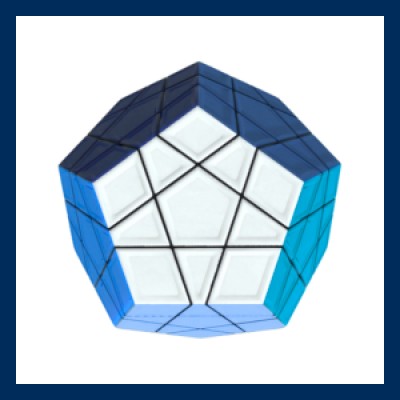

Future Works
3D Floorplan Conversion Specialist
⭐ - Featured Role | Apply direct with Data Freelance Hub
This role is for a 3D Floorplan Conversion Specialist on a contract basis, offering competitive pay. Key skills include expert Python scripting, computer vision, and computational geometry. Experience in translating research into code and familiarity with 2D/3D file formats is essential.
🌎 - Country
United States
💱 - Currency
$ USD
-
💰 - Day rate
Unknown
-
🗓️ - Date
November 22, 2025
🕒 - Duration
Unknown
-
🏝️ - Location
Unknown
-
📄 - Contract
Unknown
-
🔒 - Security
Unknown
-
📍 - Location detailed
United States
-
🧠 - Skills detailed
#AI (Artificial Intelligence) #Object Detection #Automation #ML (Machine Learning) #Python #Scripting #"ETL (Extract #Transform #Load)" #Semantic Segmentation
Role description
Your primary focus will be to architect and build a robust, automated pipeline that converts 2D floor plan images into clean, well-structured 3D models. The success of this role is measured by the ability to reliably produce standard 3D files from varied 2D inputs.
Key Responsibilities:
• Develop a Conversion Pipeline:
• Create an automated script or application that ingests 2D floor plan images (e.g., JPG, PNG, PDF).
• Implement computer vision algorithms to perform essential pre-processing tasks, including noise reduction, perspective correction, and scaling.
• Geometric Extraction and Processing
• Utilize vectorization techniques to trace raster images, identifying and converting walls, doors, and windows into geometric primitives (lines, polygons).
• Develop logic to accurately extrude the 2D vector data into 3D wall geometry.
• Model Generation and Export
• Ensure the generated 3D models are clean, manifold, and adhere to 3D best practices.
• Automate the process of creating openings for doors and windows in the 3D mesh.
• The final, primary deliverable will be the exported 3D model in a common, usable format such as FBX, GLB, or a structured .blend file
• Applied Research and Innovation:
• Translate cutting-edge research in 2D-to-3D conversion, computer vision, and generative AI into practical, production-ready code, ensuring our pipeline remains at the forefront of the industry.
• Optimization and Refinement
• Continuously improve the pipeline's accuracy and resilience to handle variations in the quality and style of input floor plans.
Required Skills & Experience:
• Essential Hard Skills
• Expert-level Python scripting (or equivalent), with a strong portfolio of automation projects.
• Strong background in Computer Vision for tasks including edge detection, contour analysis, and image segmentation.
• Solid understanding of computational geometry, 3D mesh topology, and data structures.
• Highly Desirable Skills
• Demonstrated ability to translate academic research (e.g., from arXiv, SIGGRAPH) and emerging open-source models into functional, actionable code.
• Experience with machine learning models for object detection or semantic segmentation in architectural drawings.
• Familiarity with various 2D/3D file formats and the nuances of converting between them (e.g., SVG, DXF, FBX, GLB/glTF).
• Profile
• You are a focused problem-solver who excels at tackling specific, deep technical challenges. You are a practical innovator with a passion for bridging the gap between theoretical research and tangible engineering outcomes. You actively follow the latest developments in the field and are driven to implement them.
Your primary focus will be to architect and build a robust, automated pipeline that converts 2D floor plan images into clean, well-structured 3D models. The success of this role is measured by the ability to reliably produce standard 3D files from varied 2D inputs.
Key Responsibilities:
• Develop a Conversion Pipeline:
• Create an automated script or application that ingests 2D floor plan images (e.g., JPG, PNG, PDF).
• Implement computer vision algorithms to perform essential pre-processing tasks, including noise reduction, perspective correction, and scaling.
• Geometric Extraction and Processing
• Utilize vectorization techniques to trace raster images, identifying and converting walls, doors, and windows into geometric primitives (lines, polygons).
• Develop logic to accurately extrude the 2D vector data into 3D wall geometry.
• Model Generation and Export
• Ensure the generated 3D models are clean, manifold, and adhere to 3D best practices.
• Automate the process of creating openings for doors and windows in the 3D mesh.
• The final, primary deliverable will be the exported 3D model in a common, usable format such as FBX, GLB, or a structured .blend file
• Applied Research and Innovation:
• Translate cutting-edge research in 2D-to-3D conversion, computer vision, and generative AI into practical, production-ready code, ensuring our pipeline remains at the forefront of the industry.
• Optimization and Refinement
• Continuously improve the pipeline's accuracy and resilience to handle variations in the quality and style of input floor plans.
Required Skills & Experience:
• Essential Hard Skills
• Expert-level Python scripting (or equivalent), with a strong portfolio of automation projects.
• Strong background in Computer Vision for tasks including edge detection, contour analysis, and image segmentation.
• Solid understanding of computational geometry, 3D mesh topology, and data structures.
• Highly Desirable Skills
• Demonstrated ability to translate academic research (e.g., from arXiv, SIGGRAPH) and emerging open-source models into functional, actionable code.
• Experience with machine learning models for object detection or semantic segmentation in architectural drawings.
• Familiarity with various 2D/3D file formats and the nuances of converting between them (e.g., SVG, DXF, FBX, GLB/glTF).
• Profile
• You are a focused problem-solver who excels at tackling specific, deep technical challenges. You are a practical innovator with a passion for bridging the gap between theoretical research and tangible engineering outcomes. You actively follow the latest developments in the field and are driven to implement them.






